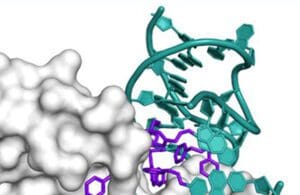
[Image courtesy of Somalogic]
Clinicians are ready and eager for the future of diagnostic and prognostic models — ones that are built on proteomics.
I have been feeling and hearing one key theme in 2022 – physicians are ready, even dare I say eager, to get their hands on proteomic tests and tools that better empower and equip them to serve their patients.
With this, I am excited to share the following reflection and prediction. 2022 was the year for increased awareness and buzz around the fruition of proteomic technology. Companies in the proteomics space started to offer capabilities in point-of-care settings, an important pivot from the previous decades-long primary use case for proteomic technology in the research and life sciences space.
As we march quickly into 2023, we can expect to see great uptake from providers in adopting proteomic tests into their daily patient practices. We are already seeing great demand for tests via online provider ordering portals, and we expect this to increase in the new year as patients and doctors think about starting off 2023 on the right foot for health and wellness.
This is good news because proteomics has the power to change healthcare delivery. Let’s look at a cardiovascular disease example:
One of the most profound ways we can see the power of proteomics is in addressing cardiovascular disease (CVD) and the connections between multiple therapeutic areas. After all, CVD is the leading cause of death in the U.S. and globally – in the U.S., every one in three deaths is from CVD – yet current mechanisms to screen patients, risk-stratify and personalize treatment decisions are ineffective.
Several studies using proteomic tests have looked at the connections between CVD and other therapeutic areas, like dementia, Type 2 diabetes, COVID-19 recovery, and more. For example, individuals with dementia may also have Type 2 diabetes or CVD. In addition, the proteomic studies have helped us see how proteomic risk indicators for CVD/mortality are associated with neurodegeneration and imaging features of Alzheimer’s in older adults.
These proteomic indicators of CV health may aid drug developers in identifying new therapeutic avenues. And for physicians, diagnosing a person with CVD or risk via a proteomic test can lead them to look at and treat the patient holistically. The proteomic test allows physicians to identify and manage CV risk in populations with chronic conditions where CV risk is known to impact survival.
Proteomics is meeting the moment. So, where can we go from here?
It’s been said for years that proteomics would change the future of healthcare, but this year we truly saw the evidence of these claims. The technology is here, and what comes next is to adopt it.
I predict, and I hope, that we will see the adoption of this technology into everyday physician practices, or at the very least into practice among physicians in crucial disease areas, like cardiologists. After all, using proteomics will allow them to allocate newer cardio-protective therapeutics to the patients who need them the most.
However, one barrier to this is coverage of the test by insurance payers. The last horizon for test producers is to work with payers to secure their support for the tests. Technology costs have decreased, making tests more affordable than ever. But to make the tests attainable and attractive for most people, the tests need to be covered by insurance.

Stephen Williams
We know a horizon exists where healthcare providers can predict patient health risks and measure response to treatment over time, all from one blood sample. This can be our reality as clinicians have proteomic test technology at their fingertips and are ready and eager to wrap their hands around it.
Stephen Williams, MD, Ph.D. is the chief medical officer of SomaLogic. He is responsible for clinical R&D, medical affairs and regulatory and quality. He oversees clinical application of the SomaScan Platform and has also had roles in launching the life sciences commercial business, assay development and bioinformatics.